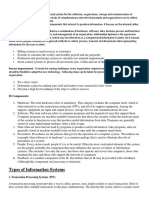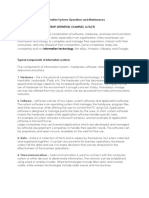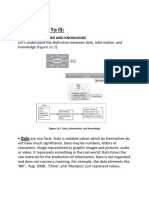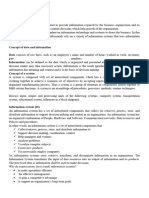0% found this document useful (0 votes)
11 views22 pagesMIS Notes
An Information System (IS) is a framework that collects, processes, and distributes information to aid organizational decision-making, involving hardware, software, data, people, and processes. Various types of IS include Transaction Processing Systems (TPS), Management Information Systems (MIS), Decision Support Systems (DSS), Executive Support Systems (ESS), and Knowledge Management Systems (KMS), each serving different management levels and functions. The impact of IS on organizations and society includes improved efficiency, better decision-making, enhanced communication, and challenges such as data security and quality.
Uploaded by
tejaskalokheworkCopyright
© © All Rights Reserved
We take content rights seriously. If you suspect this is your content, claim it here.
Available Formats
Download as PDF, TXT or read online on Scribd
0% found this document useful (0 votes)
11 views22 pagesMIS Notes
An Information System (IS) is a framework that collects, processes, and distributes information to aid organizational decision-making, involving hardware, software, data, people, and processes. Various types of IS include Transaction Processing Systems (TPS), Management Information Systems (MIS), Decision Support Systems (DSS), Executive Support Systems (ESS), and Knowledge Management Systems (KMS), each serving different management levels and functions. The impact of IS on organizations and society includes improved efficiency, better decision-making, enhanced communication, and challenges such as data security and quality.
Uploaded by
tejaskalokheworkCopyright
© © All Rights Reserved
We take content rights seriously. If you suspect this is your content, claim it here.
Available Formats
Download as PDF, TXT or read online on Scribd
/ 22

































































































